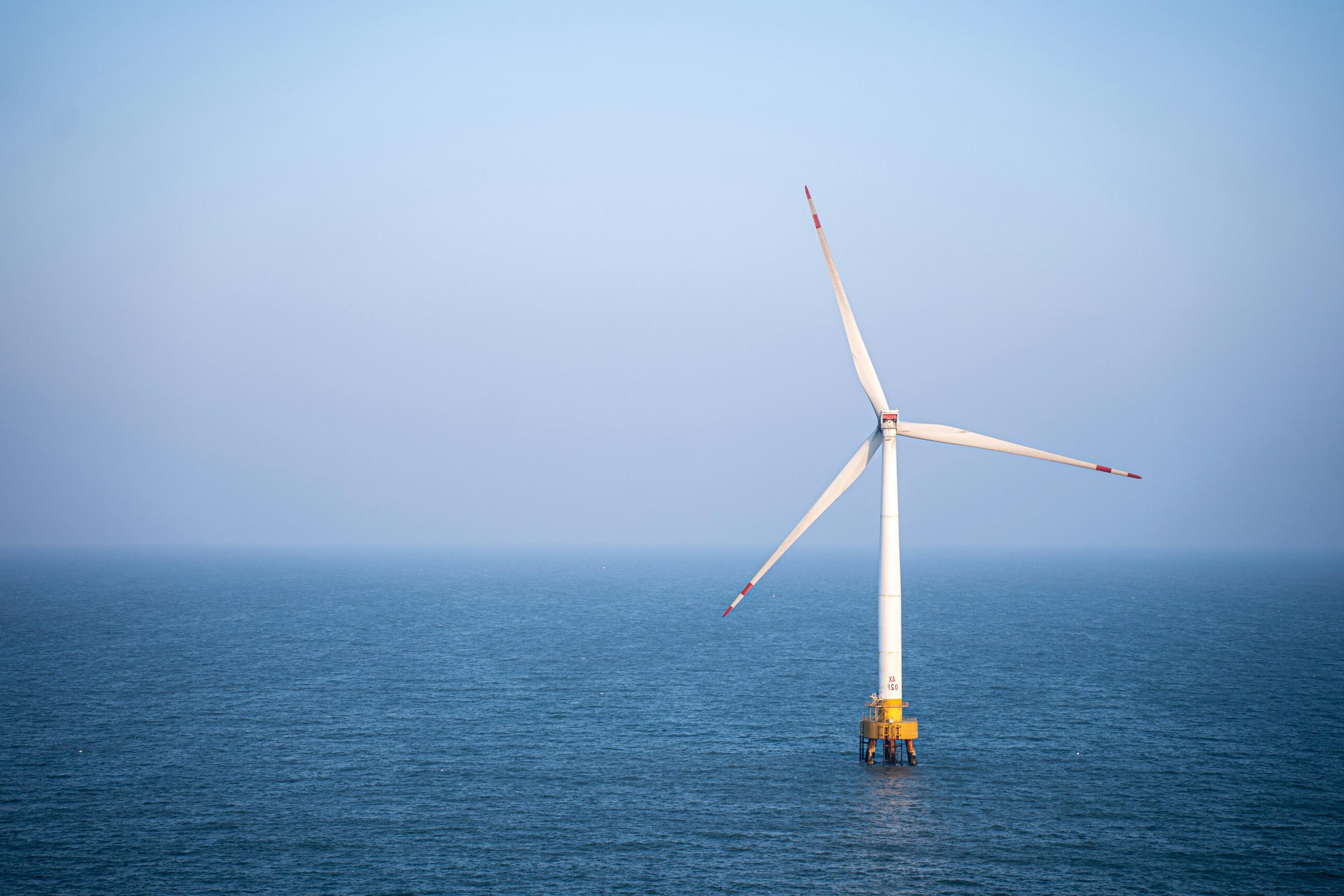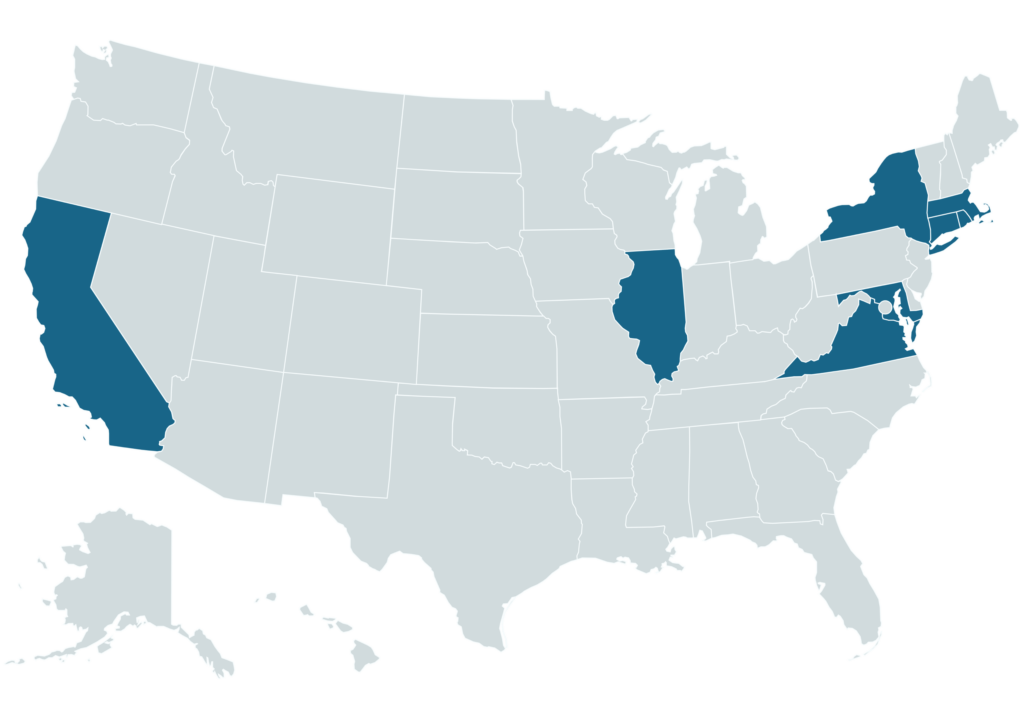
Policy Update
States Power Offshore Wind Forward Amid Federal Retreat
April 15, 2025
Overview
The offshore wind (OSW) landscape is shifting, and states are seizing the moment to lead. A sweeping executive action in January 2025 placed an indefinite pause on all new federal offshore wind leasing, while putting pending projects in limbo. Despite this freeze at the federal level, offshore wind momentum is continuing at the state level. At least eight coastal states have introduced over 24 pieces of legislation in 2025 to strengthen their infrastructure and commitments to offshore wind.
Why Offshore Wind and State Leadership Matter
U.S. offshore wind has the potential to generate nearly double the nation’s current electricity use, while helping governments at all levels improve the health of communities and the environment. With the right policy drivers and a robust stakeholder engagement process, states can harness the potential of offshore wind to create thousands of jobs, support local economic development, and produce more affordable, renewable energy for years to come.
While the federal landscape for offshore wind continues to change, state actions can keep the potential for offshore wind alive and position states to be ready to act.
The 2025 State of Play: How Are States Protecting Offshore Wind?
Of the over 24 pieces of legislation currently being considered across eight states, most focus on continuing offshore wind momentum through (1) port infrastructure and supply chain investments, (2) strengthening goals and planning processes, (3) workforce development, and (4) advancing projects in state waters.

Infrastructure Investments: Transmission, Ports, and Supply Chain
As states wait to see how the federal government’s actions will impact market dynamics and previous investments in offshore wind, many are turning their attention to policies in 2025 that can improve port and transmission infrastructure, as well as supply chains, to give offshore wind a clear pathway for implementation. States such as California (A.B.472), Illinois (SB1442), and Massachusetts (H.3554) are considering this type of legislation in 2025.
- A Closer Look: California has proposed legislation (A.B.472) that would require the state to assess funding needs and opportunities for developing port infrastructure that can aid offshore wind energy development in the coming years.
Offshore Wind Goals and Planning
States are also introducing legislation to develop strategic plans for offshore wind development and reaffirm goals on gigawatt deployment. Clear, ambitious state goals can signal to developers a continued commitment to offshore wind even when federal leadership falters, as well as encourage further investment in offshore wind infrastructure and supply chains. Rhode Island (H 5816), Maryland (HB 398), and New York (A.2596) are among the states considering bills to strengthen offshore wind planning.
- A Closer Look: New York’s A.2596 would establish new and more ambitious targets for offshore wind electricity generation, including 20 gigawatts by 2050.
Workforce Development
More states are successfully moving bills that would invest in workforce development projects that support the offshore wind industry. Workforce development programs can help to ensure a just energy transition while maximizing local benefits. Massachusetts (H.3554) and Maryland (SB937) are among the states considering offshore wind workforce development bills.
- A Closer Look: Virginia passed legislation H.B.1616 that would have mandated the development of training resources for the offshore wind industry, while prioritizing opportunities for veterans, local workers, and disadvantaged communities.
Offshore Wind in State Waters
Lastly, states can continue to advance legislation that fast-tracks approvals for wind projects in state-managed waters, which will likely operate on lease sale and permitting timelines that extend beyond the current Administration.
Louisiana offers a great example of the potential for offshore wind in state waters. Despite its deep oil and gas roots, the state passed H.B.165 to authorize leasing in state waters and S.R.84, to acknowledge the economic potential of offshore wind, both with bipartisan support.
- Impact: Louisiana companies that have served the oil and gas industry for generations have since begun transitioning to planning and contributing to the offshore wind supply chain, and small-scale wind farms have been approved for construction in state waters.
Stay Informed on State Policy With NCEL
Stay up to date on trends in offshore wind policy across the country this year with NCEL’s Bill Tracking Map.